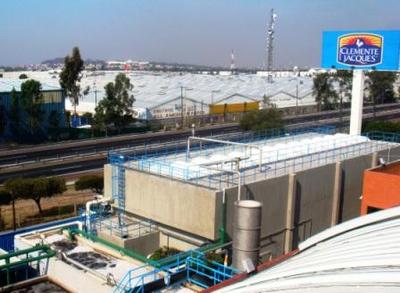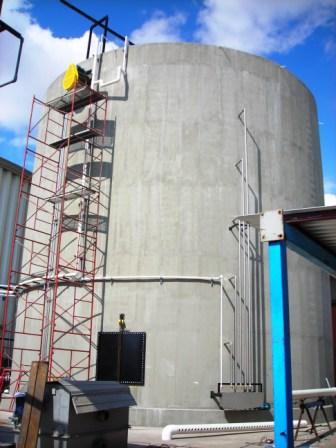Powering a processing plant with wastewater
Tuesday, 03 December, 2013
Founded in 1964, Sabormex (which translates as “Mexican flavour”) produces a number of well-established Mexican brands such as Clement Jacques, La Sierra, Tazza, Garat and Familiar, which are exported to more than 20 countries around the world.
The company’s production encompasses sauces, canned foods and coffee. Such diversified production results in fast and significant changes in the composition and flows of the company’s wastewater. It often contains high concentrations of fat, oil and grease, and generally high levels of total suspended solids and COD (chemical oxygen demand).
In order to deal with the variable characteristics of the wastewater, Global Water Engineering (GWE) engineered and installed an ANUBIX-B anaerobic reactor, designed to handle 24 tons of COD per day. According to the company, this reactor - which has been operating since 2011 - has shown consistently high removals and stable performances.

The plant was built by GWE’s long-standing partner ICR Ambiental. The Mexican company specialises in engineering and construction of projects for water and wastewater treatment, solids digestion and power generation. ICR has partnered with GWE in many projects over the years by engineering and building wastewater treatment plants in Latin America.

All suspended solids and fats sent to the wastewater treatment plant are first separated in a dissolved air flotation installation which generates up to 100 m3 of primary sludge every day. In order to digest this primary sludge, which is rich in organics, GWE installed an ANAMIX-T reactor, a thermophilic continuous stirred-tank reactor which achieves high removals of pollutants even while fed with a difficult stream containing high concentrations of fat and solids. Up to 10 tons of COD per day are fed to the reactor, with the system achieving removal efficiencies of more than 80%.
Start-up of this reactor took only a few weeks, thanks to a special seed sludge collected from another GWE ANAMIX-T which had been operating in Belgium for several years. An innovative method of preserving the activity of bacteria developed by GWE means this seed sludge can be shipped overseas in regular containers.

Following on from the success of the wastewater plant, Sabormex has subsequently ordered a complete biogas re-use system in order to burn the biogas generated by the two anaerobic reactors. This will generate 6000 Nm3/day of biogas, allowing savings equivalent to up to 8000 kg of fuel oil per day. This plant is also equipped with GWE’s state-of-the-art emergency ground flare with temperature-controlled combustion, which is in line with stringent emission regulations.
The quantity of biogas produced by Sabormex is equivalent to around 2650 tons of the fossil fuel equivalent each year. GWE estimates this to be worth more than US$2 million in the first year of operation and well over $20 million in its first decade.
The GWE technology installed for Sabormex in Mexico is represented in Australia and New Zealand by CST Wastewater Solutions. CST Managing Director Michael Bambridge says such green energy/environmental anaerobic digestion technology is applicable to a host of industries, particularly food and beverage industry applications.
Anaerobic digestion facilities are recognised by the United Nations Development Programme as one of the most decentralised sources of energy supply, as they are less capital-intensive than large power plants. More than 300 GWE anaerobic wastewater plants have been installed around the world. The plants clean the water to high discharge standards while producing biogas (methane) that can be used to generate green electricity for sale to the local grid or to fuel boilers and other factory plant fuel consumers.
According to CST, many of the plants utilising biogas in this way achieve payback of plant costs in two years - or even less in some cases - as they permanently reduce the amount of fossil fuel used and generate permanent environmental gains and financial savings.
Turning sustainability into an advantage in food and beverage
Nearly half of all Australian shoppers are influenced by sustainability when making purchases,...
The 'flour effect' pathway to Scope 3 emission cuts
An Australian Study reveals how a simple ingredient could become a climate solution for food...
Whey to go up: unlocking further potential for cheese by-product
A new mixed-method study explored four models that could provide potential for the Australian...











